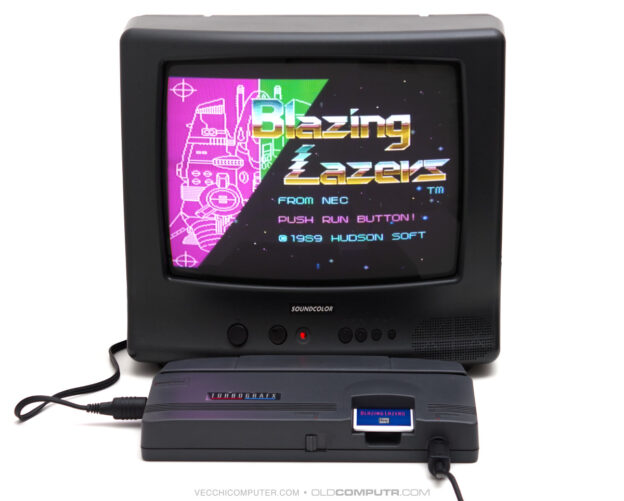I was familiar with a couple of variants of this console: the original Japanese PC Engine from 1987 and the American version from 1989 called TurboGrafx-16. I have the version intended for the European market, simply called TurboGrafx, from 1990: it was based on the American model, with a few adjustments to make it work with the PAL standard. The launch of the console in Europe was cancelled, and those already produced were sold to various distributors.
This console was donated to me in 2011 by Enrico S. along with the two CPC 464s of the previous post, an MB Vectrex, a CBS ColecoVision, a Neo•Geo AES, and an Amiga 500.
The acronym ‘NOS’ (new old stock) is commonly used to refer to an item like this: it is old (35 years), but it is also new in the sense that it has never been used and is still in its original packaging.
The ‘complete’ console is split into two boxes. I suppose it was a choice to simplify the distribution of the console in the various countries of the ‘PAL zone’: the console is the same for all, and the accessories are customised for the various countries (electrical plugs, voltages, a/v cables, etc.).
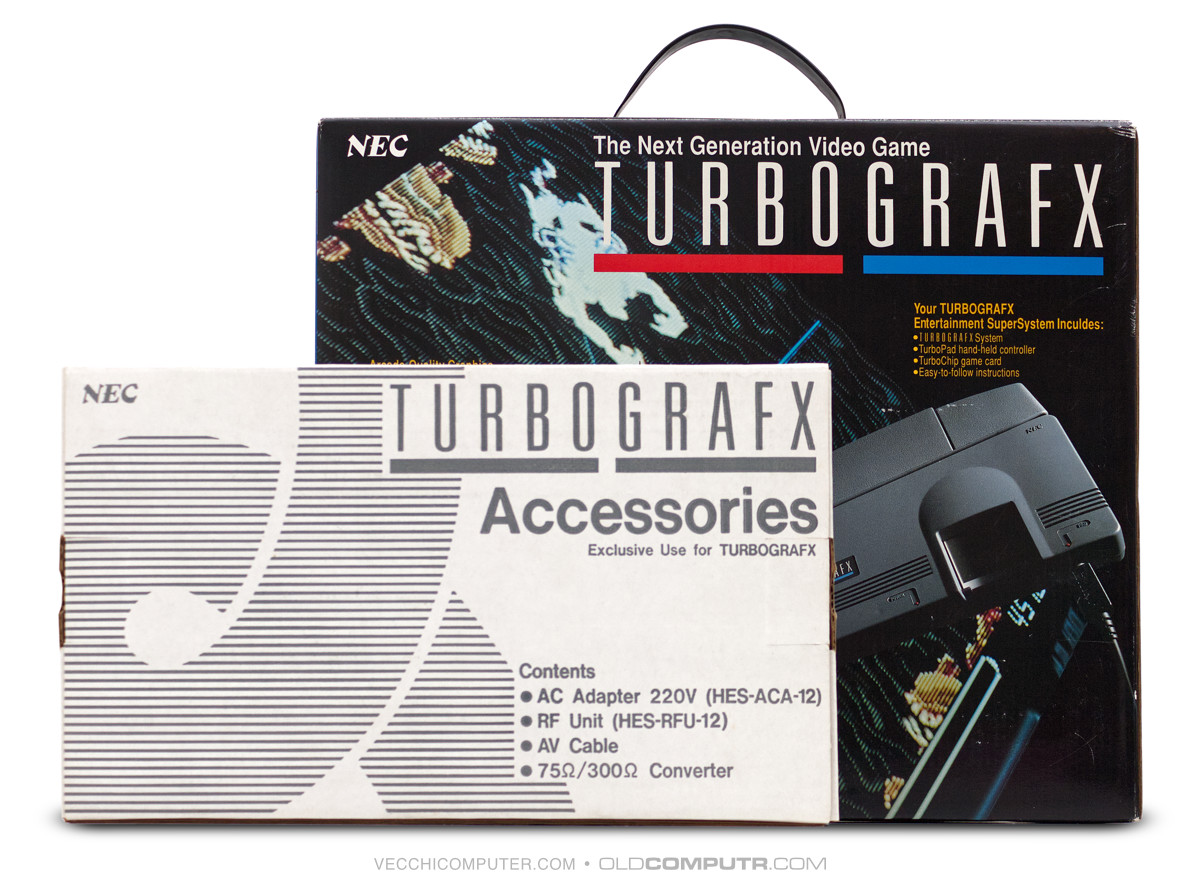
The main box contains the console with its instructions, one controller, and the included game (under the console).
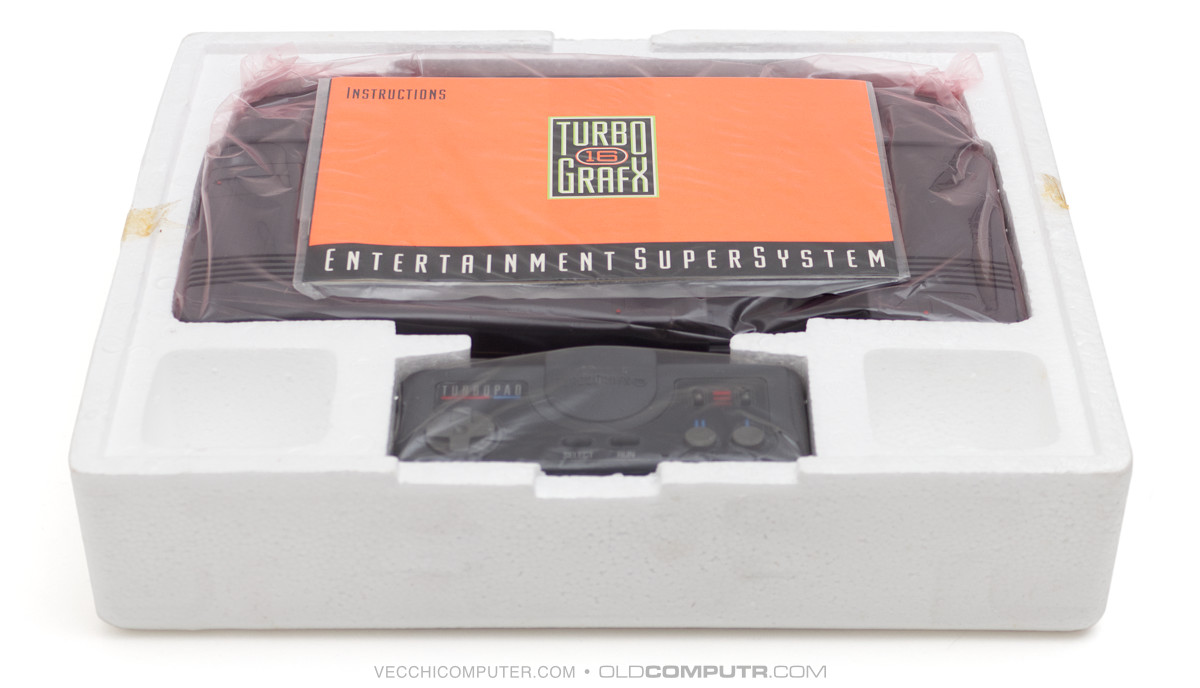
The accessories box contains the power supply, an a/v composite cable, a modulator, an antenna cable, and a couple of antenna cable adapters.
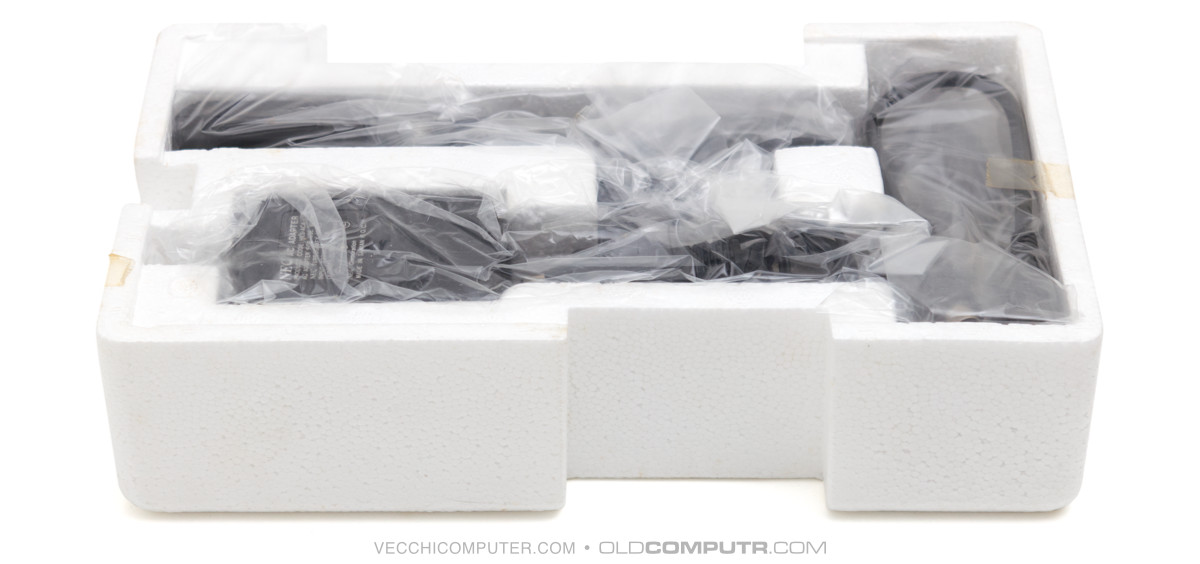
Here’s the console:
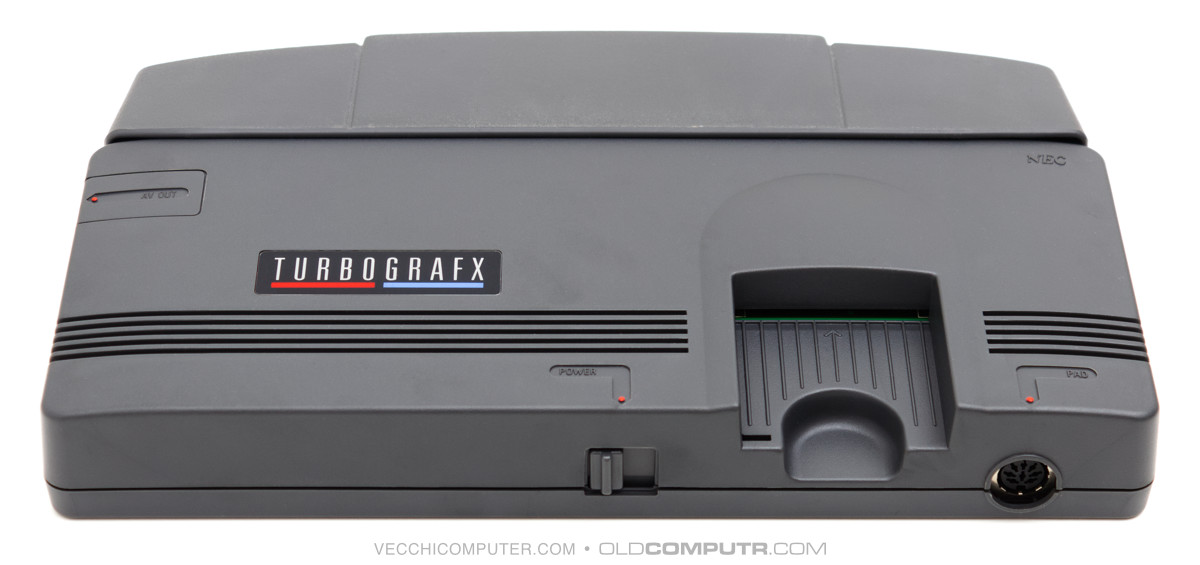
The back of the case is connected to the console with a hook at the bottom. After taking the console, power supply, video cable, and controller out of the boxes, I turned the console over in my hands for a while in search of the power connector, before realising that the back was detachable.
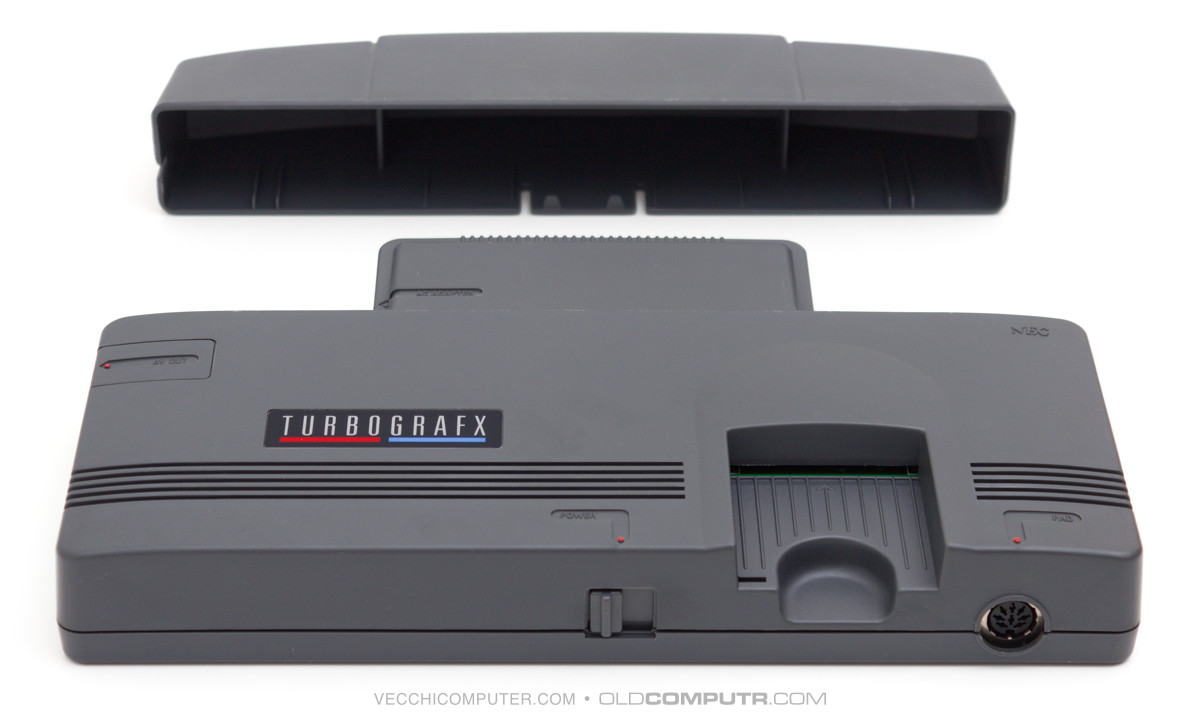
A view of the console without the rear cover:
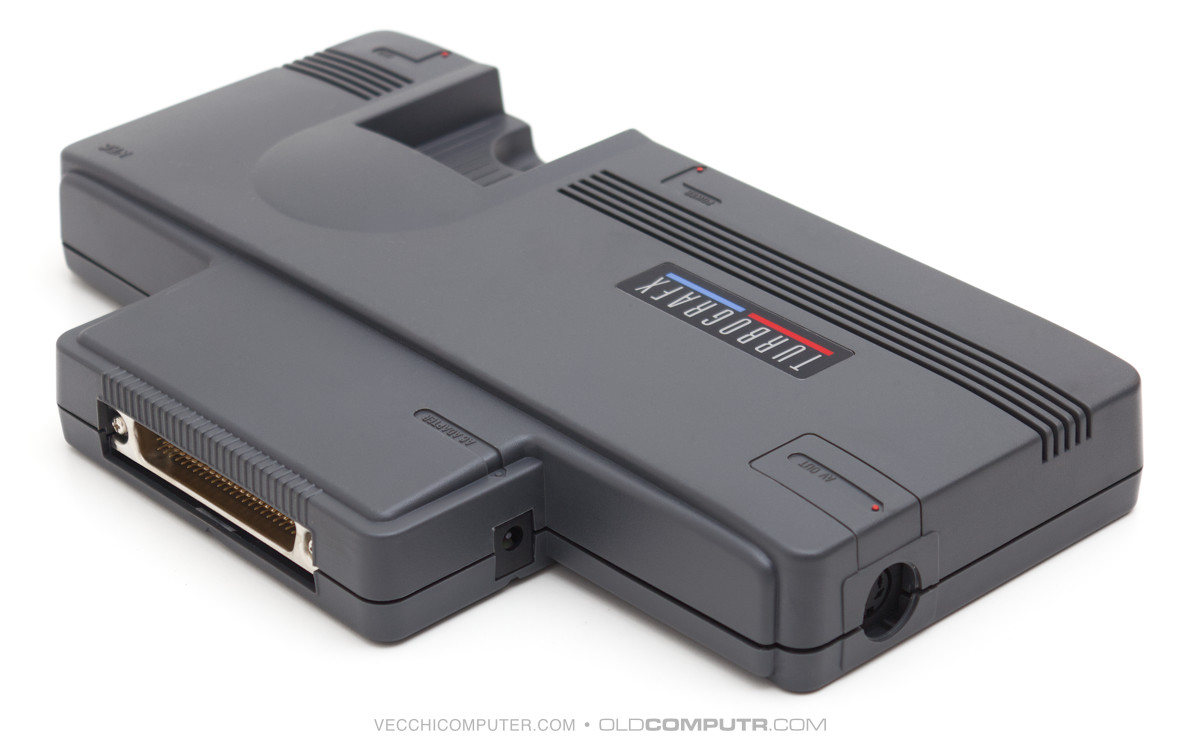
On the front there’s the power switch and controller port; on the back, the expansion port; on the left, the audio/video output and power connector. In order to play with a friend, you had to buy a separate accessory.
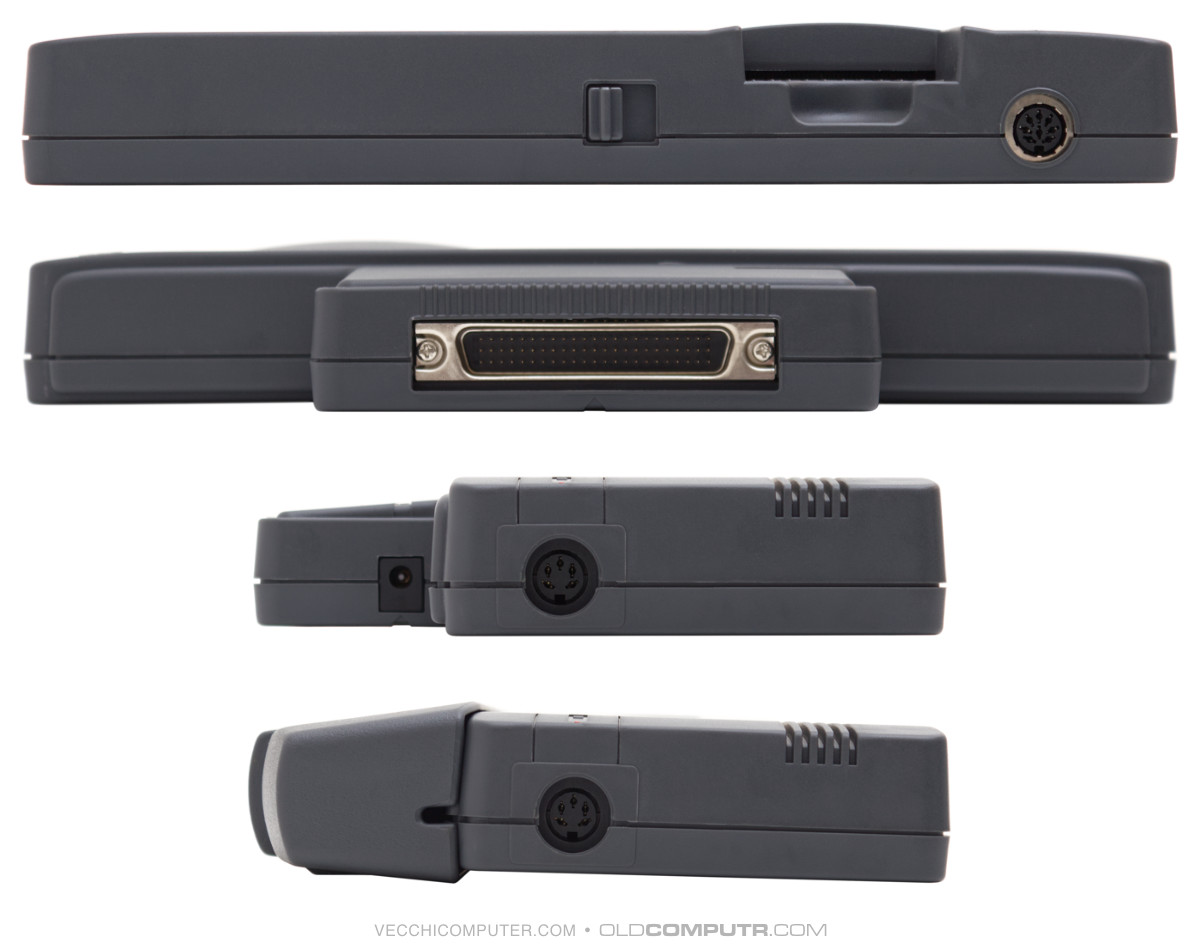
The rear casing has a small cut-out to pass the power cable through.
The controller is the same ‘TurboPad’ as the American version: as you can see it is labelled ‘TurboGrafx 16’.
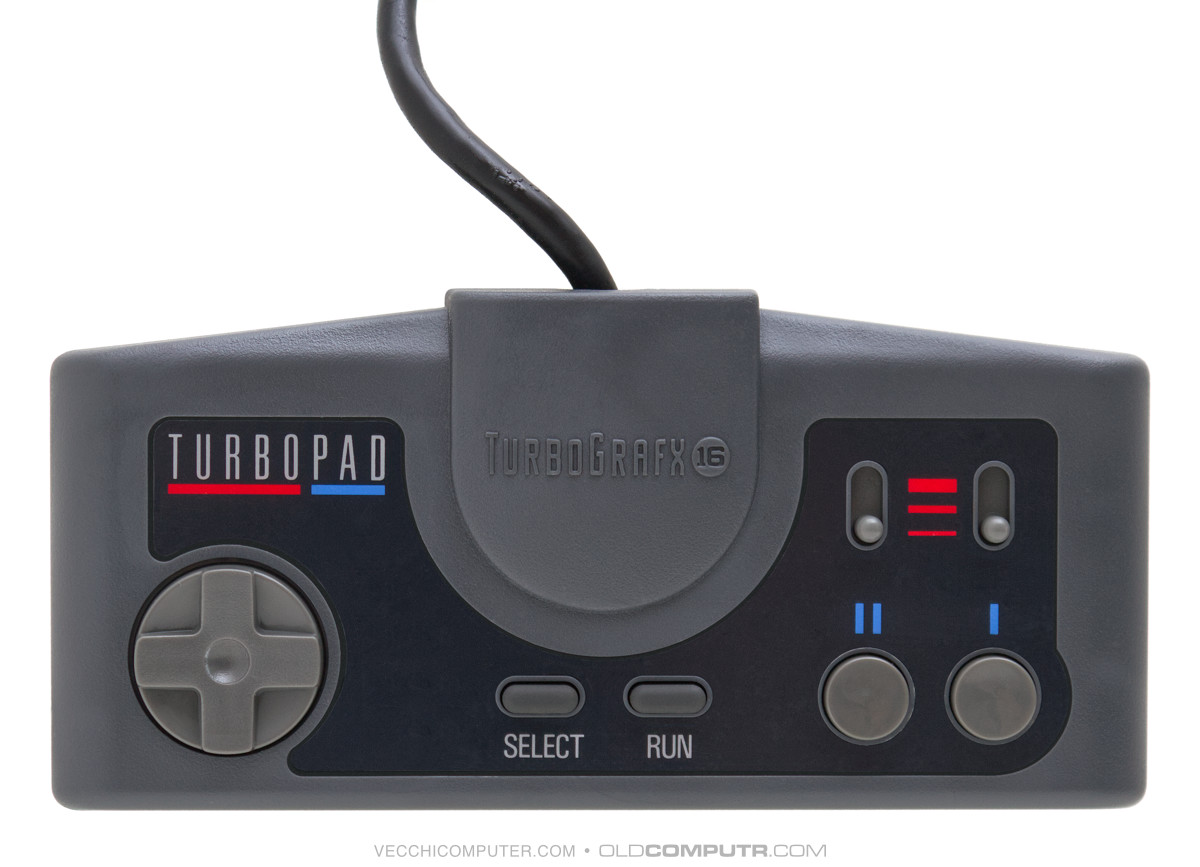
Games were distributed on a cartridge called HuCard, roughly the size of a credit card.
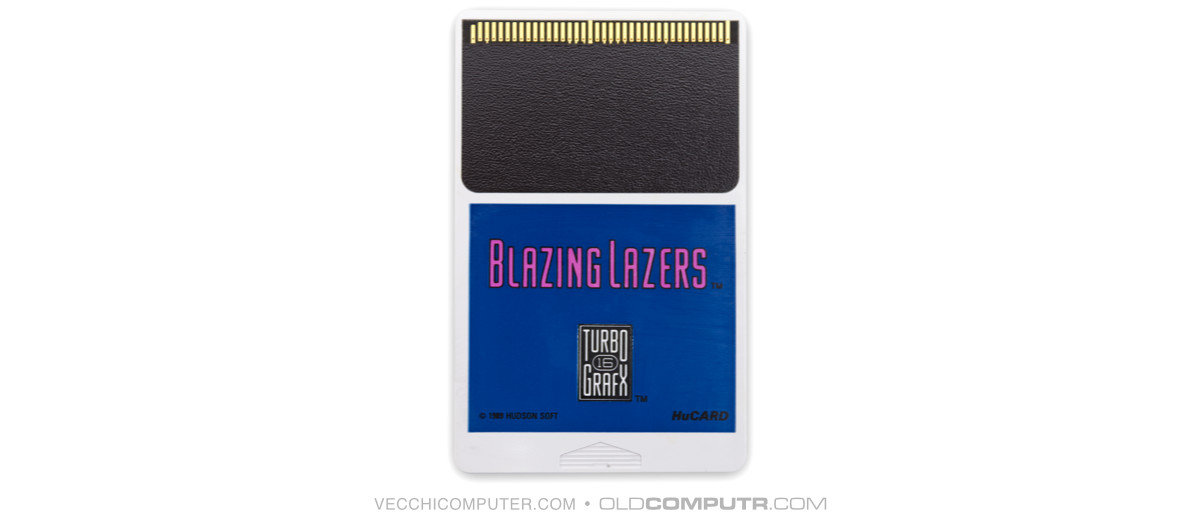
This version of the console included the game Blazing Lazers.
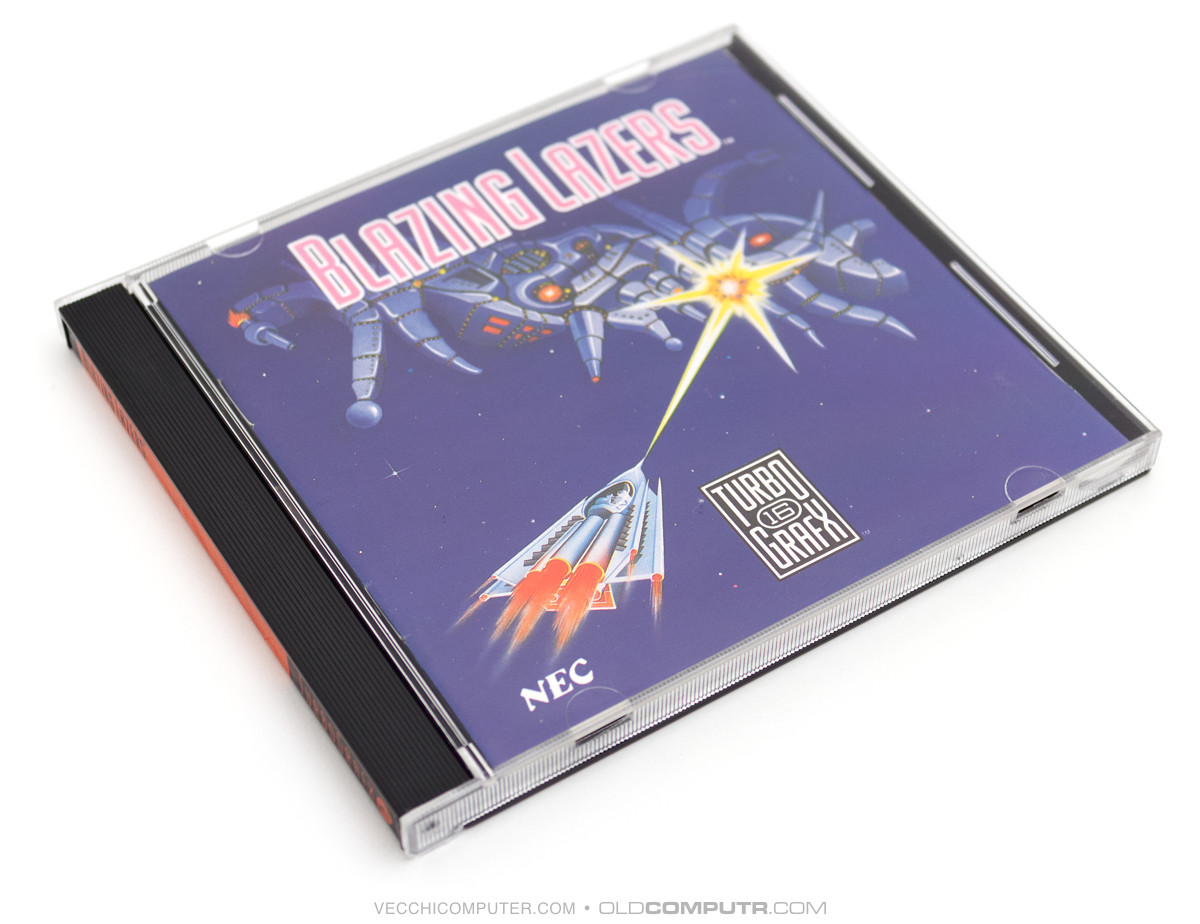
This is a photograph of the first screen, before getting to the title of the game. It’s the animated version of the illustration on the cover :-)
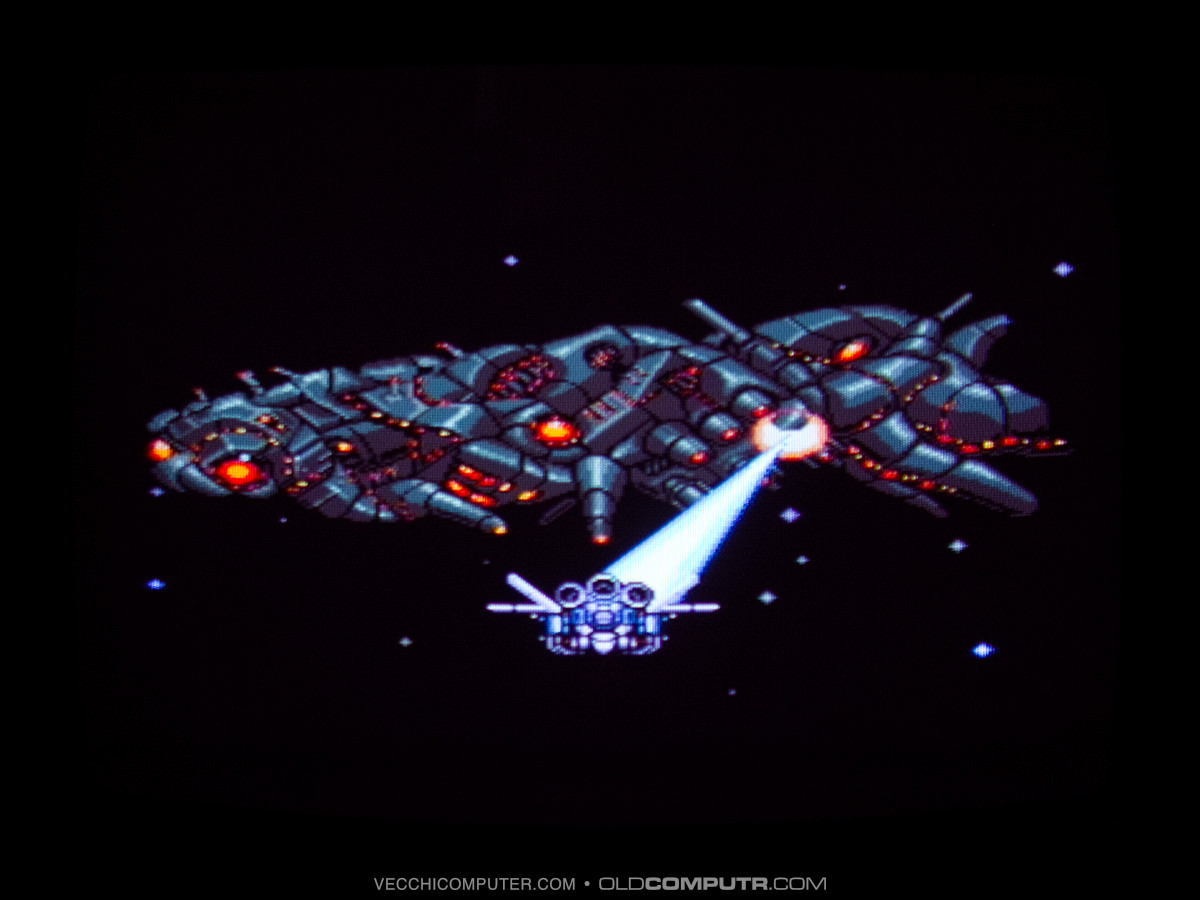
The case is derived from that of a CD.

The HuCard’s sleeve became sticky, possibly due to the flame retardant used in the plastic; I cleaned it with isopropyl alcohol, and before storing the console I wrapped the cartridge with some clingfilm to avoid ruining it.
For further reading, I recommend the Wikipedia article and PC Engine / TurboGrafx-16 Architecture – A Practical Analysis by Rodrigo Copetti.
Discover more from Oldcomputr.com
Subscribe to get the latest posts sent to your email.
